Unique Lead Generation Tips for Non-Sales Pages
Visitors often do not make a purchase the first time they land on a website. This is nothing new. Websites must be built in a way that guides potential customers through the sales funnel, wherever they start on it.
Many websites miss crucial opportunities to generate leads by overlooking certain web pages as non-lead generating pages and therefore not important to the site’s bottom line. Every page can serve lead generation and should not be overlooked. Websites, as a result, need to establish, and understand, their current lead generation strategy and how they can build upon it with these unique approaches.
We put together a great view of the basic strategies and a few fun “unique” opportunities that real companies are implementing.
BASIC LEAD GENERATION STRATEGIES:
Before branching out to the unique strategies, it is important that your website analytics are set up to understand where leads are coming from and what page is “earning” the lead. Once the analytics are set up, a marketing team can work on the basic lead gen strategies. These include email capturing, tracking phone leads, blog followers and social media.
Capturing Emails
Capturing email addresses is an easy, effective way to measure leads. Through email, your customers demonstrate an interest in connecting with you. But, how can you maximize the number of email leads? There are several strategies you can use. For example…
- Offer something valuable in exchange – such as a coupon code, or a free resource, such as Lids does here:
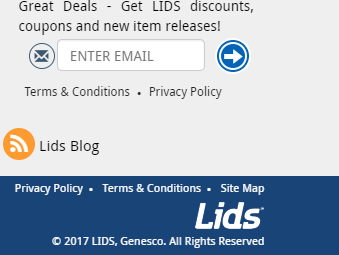
(Image Source: Lids)
- Keep the first part of the signup forms simple. TransUnion, for example, does this well with its rental screening service, SmartMove:
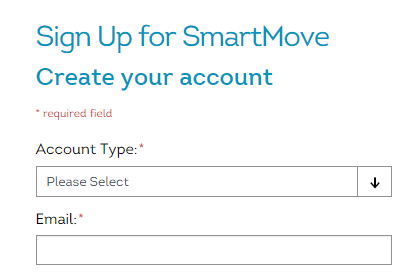
(Image Source: TransUnion SmartMove)
Always limit the email captures to asking only for the email address, and perhaps a first name for personalization. Leads need to feel that providing their contact information is worth whatever you offer in return, so the more information you ask for, the bigger the reward should be.
Phone Leads
Customers who take the initiative to pick up the phone and call to find out more about a company are immensely valuable, and you are more likely to convert potential customers into sales. To effectively track how these people find your phone number, be sure you use different phone numbers for different ad campaigns and lead generation placement. There are many tools for this and here is a great resource from CallRail for further reading.
Build a Blog Following
Blogs are valuable because they provide clients and customers with information. Create a following (and subscriber list) on your blog so that potential leads and clients can stay informed of new services or resources. Don’t forget that blog content should not just be a sales tool. Give these subscribers great information or else they will eventually lose interest.
Uncharted Supply Co.’s blog post on “How to Build a Shelter” provides a good example of excellent, non-sales focused, content.
Social Media
Although leads generated from social media are notoriously difficult to track, they provide plenty of value. Social media platforms allow leads to interact with the company daily, which makes the experience feel personalized. Users, however, cannot interact with you unless your social channels are readily available. If you direct website visitors to your social media channels in the header or footer of every page, like WD-40 does, this is easily accomplished.
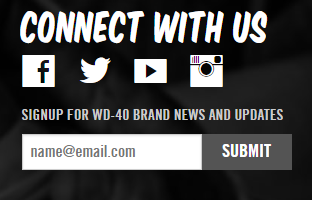
(Image Source: WD-40)
This also illustrates how you can complement other lead generations strategies, as WD-40 does by placing its email capture below its social channels.
BEYOND THE BASICS: FIVE UNIQUE LEAD GENERATION STRATEGIES
Once the basic elements of lead generation have been established, expand them to include lesser known strategies to ensure that every page of your website is set up to help your business. These strategies include calls-to-action (CTAs), locked email capture below the header, about pages, help pages, and 404 and under construction pages.
1. Calls-to-Action (CTAs)
Incorporate enticing language into CTAs so leads know exactly what they will be doing when they click. This can be as simple as saying “click here for your free eBook” as opposed to simply “click here,” but can also be even more creative. Take a look at this stunning homepage from a Hawaii tourism site with a CTA structure at the bottom of the page:
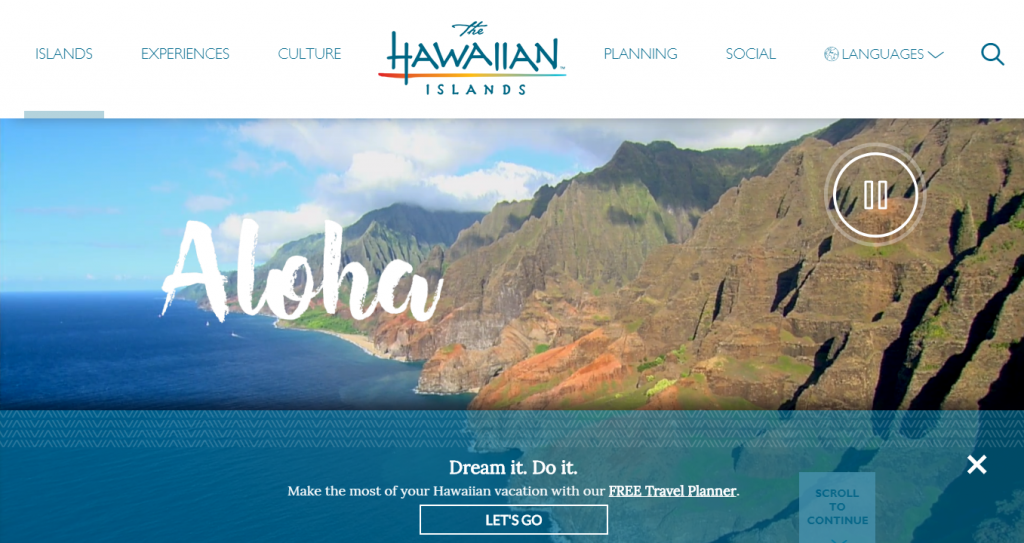
(Image Source: Go Hawaii)
Bonus tip: A scrolling CTA helps keep your message available at all times. Just make sure it does not interfere with the user’s experience.
2. Locked Email Capture in Navigation
The technique used to request emails from potential customers can affect the overall user experience. One of the best ways to make sure that no lead goes uncaptured is by locking your email capture in the navigation pane in an unobtrusive and easily accessible way. Not only does this ensure users find it easily, it also ensures you gain easy leads.
Remember the WD-40 example above? Below the social icons you will see a locked email form. Most lead generation and ecommerce websites have this same style form on their bottom navigation. Don’t forget, it’s a good rule of thumb to ask for just the email address and get the rest of the information later.
3. About Pages
About pages are often strictly informational, but to generate leads, approach them as an opportunity for visitors to introduce themselves via a form or “hello” email address. This friendly and informal approach is a creative way in which a potential lead might be motivated to provide you with information without an incentive. Telling compelling stories on your about page can direct readers to further engage in your brand.
Check out a great example from Guava Family below. Their about page has a CTA that prompts the user to have questions answered:
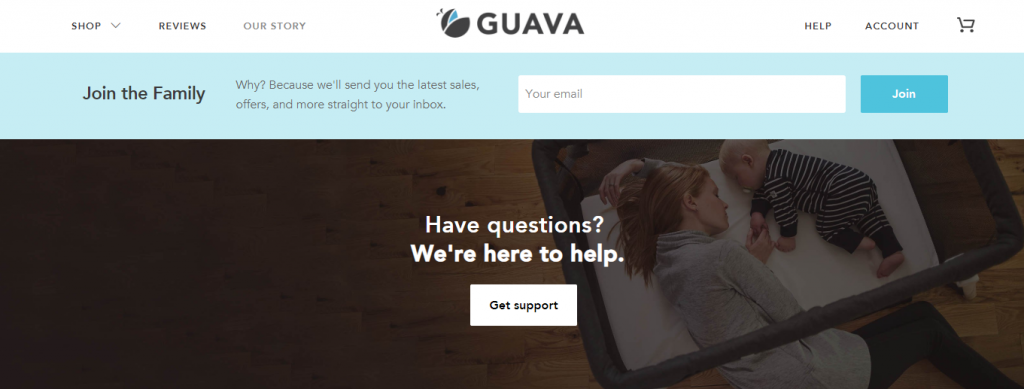
(Image Source: Guava Family)
4. Help Pages
Help pages provide assistance once sales are converted by increasing the overall lifetime value of a customer. But the best help pages provide information that assists leads in deciding whether to make a purchase or seek more information.
Include direct contact information for your company to ensure that prospective and current customers alike can easily reach you.
5. 404 and Under Construction Pages
404 pages are perhaps the most overlooked opportunity for lead generation. If a visitor lands on a 404 page with no direction to find what they are looking for, they may be permanently lost. To prevent this, incorporate an email capture on your 404 page, like this one from Coinlookup:
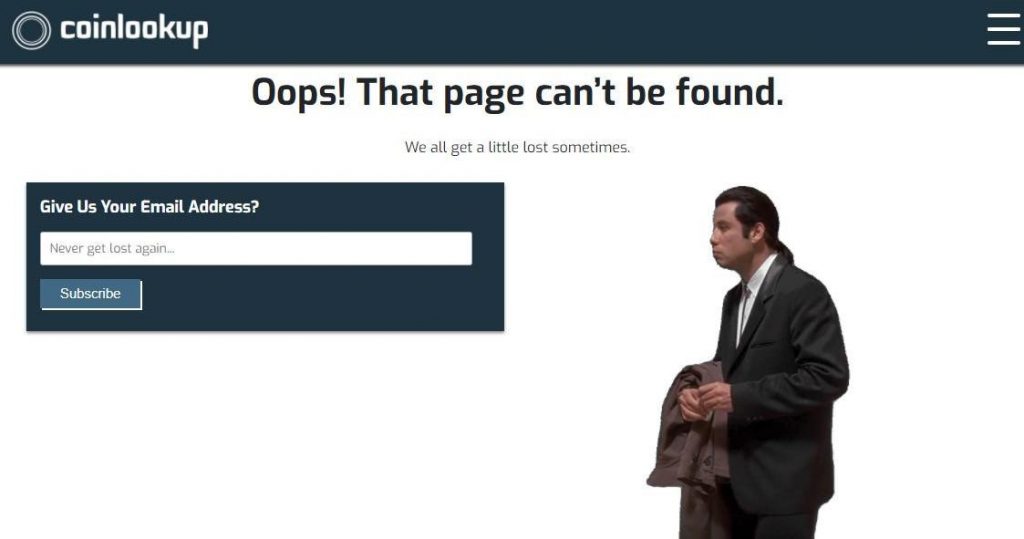
Funny 404 pages are a great way to keep visitors interested. It is also good practice to include links to common resources or the help page, especially if a popular page or resource has been changed or removed.
Similarly, use the under construction page to generate leads. Offer to notify visitors when the site goes live in exchange for their email address.
WRAPPING UP
The user experience should always be the priority. Maximizing the potential for lead generation requires being present without being aggressive or intrusive. While flashy pop-ups or complex forms may seem like the best way to grab a visitor’s attention, use these sparingly and only when it seems likely to be effective. Lead generators should be measured and tested routinely so that adjustments can be made. Even slight adjustments such as button size or color can make a big difference.
Once leads are generated, don’t ignore them! Help your leads along the sales funnel by providing the information they need to make a purchasing decision. This is accomplished through a combination of marketing tactics; leveraging email, content, and social media to best engage with the target audience.
Author Bio: Linda W. Ball
Linda received her MA Journalism degree at DePaul University in June 2017. She is a frequent visitor of San Diego where she volunteers for various marketing groups outside of the AMA San Diego and spends time with her oldest son. With whatever time she has left, she works as a freelance reporter for various publications such as Scene Chicago.







Comments are closed.